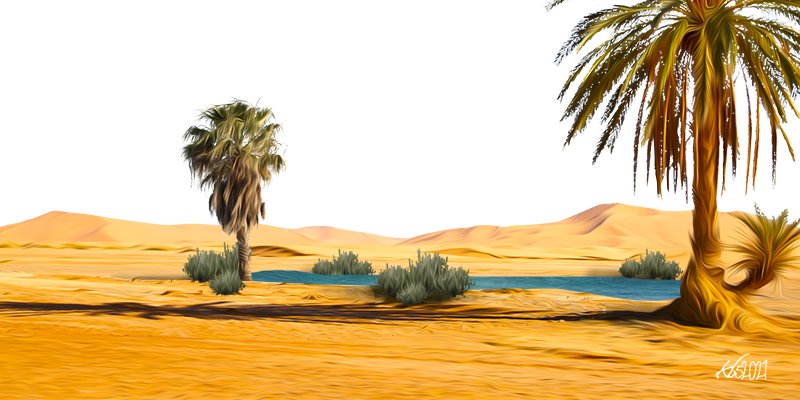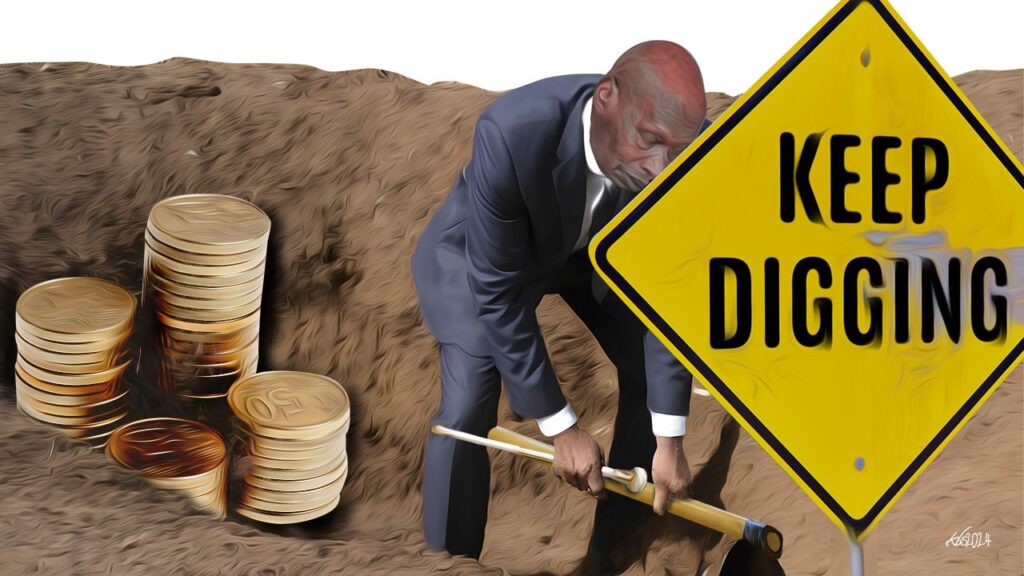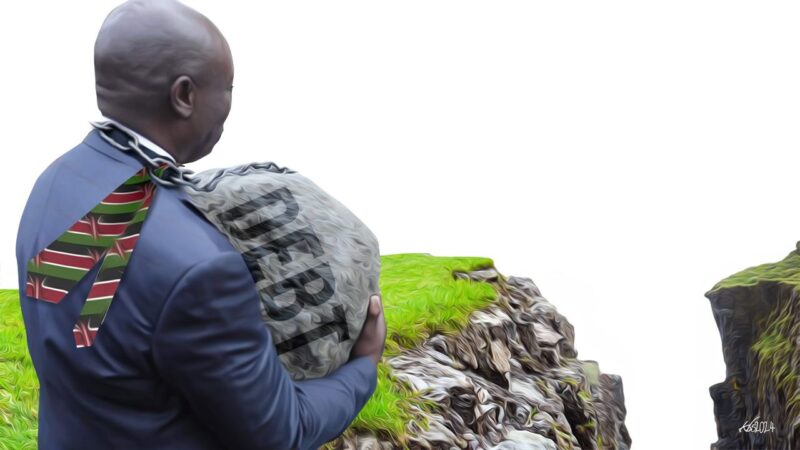The locusts appeared near the barrier to the Lake Turkana Wind Farm. They did not form a massed cloud and they did not appear to be that interested in feeding on the semi-desert vegetation. But they were everywhere, a diffuse scattering of red juveniles that gave the sky a slightly speckled cast over the next five kilometres of road.
Desert locusts were one of the obsessions of colonial administrative officers, many of whom sought to preserve the Northern Frontier District in its natural state to protect its ancient communities and abundant wildlife. The preoccupation with the region’s eco-cultural integrity was predicated on two basic assumptions: 1) if allowed, local herders would degrade the range beyond repair through overgrazing; and, 2) should the vast region be treated like the rest of the colony, outsiders would flood in and corrupt the cultural ecology of the region’s ennobled nomads.
An assortment of explorers, wanderers, and opportunists had crisscrossed the northern region during the latter decades of the 19th century. Ivory hunters brought up the rear, followed by Kamba and Somali competitors in search of the region’s last untapped population of tuskers. By the turn of the century the Rendille and Borana had also become involved in the trade, albeit reluctantly.
The paternalism of British colonial administrators serving in remote areas was in part response to the unrestrained mercantilism of their freelancing European predecessors, but it also reflected their recognition of the local communities’ expressed desire to maintain their way of life.
The local pastoralists didn’t mind the relative isolation in the beginning. They mainly wanted to be left alone in their vast, wide-open spaces. For the most part, the colonial administration respected this. But as Kenyan independence approached, isolation gave way to calls for secession.
The Kenyatta government’s sovereignty over the potentially turbulent northern rangelands started badly after the rejection recorded in the 1962 pre-independence referendum. The Shifta insurgency commenced under the shadow of emergency laws gazetted several weeks after Uhuru. This extended a state of occupation across a large swath of territory including Lamu and Tana River Districts. Shifta banditry followed.
It has been a long way coming back from this inflection point.
For ruling elites based in the region’s capitals, the rangelands mainly offered the hope of the hidden resources lurking underneath the surface. Governing the rangelands of the former NFD, the northern Rift Valley, and the North Eastern Province became a holding game—an exercise based on the probability that returns on the investment in controlled conflict management would materialise someday.
It took over five decades for the first manifestations of that pay-off to appear. It began with official recognition of the rangelands’ importance for the livestock sector’s commercial value articulated in a speech President Kibaki made after winning the 2002 elections. Prospecting for oil, natural gas, and wind power came next. This segued into the LAPSSET mega-project’s infrastructural wet dream for opening up the neglected region.
The Land of Jilali
None of this was on the radar as the new millennium approached. The La Niña drought that followed the deluge of the 1998 El Niño had restored the political ecology narrative dominating the rangelands since the colonial era. Desertification was back, and the primary culprit were the proto-modern nomads, with some help from capricious nature.
Two decades ago, I had crisscrossed the expanses of Marsabit without hearing any mention of Schistocerca gregaria, or nzige, to use the Swahili term for the locusts. Years of conversations across northern Kenya had not yielded a single mention of the scourge. But then again, the last outbreak was seventy years ago. At the time, I was part of a team of Kenya researchers based at Kenya’s National Arid Lands Research Centre investigating desertification and its potential mitigations.
In The Land of Jilali, an account of our field trips across the district, originally published in 2001, the spectre of deepening drought and famine followed us everywhere we went.
The essay featured multiple references to dark rockscapes, arboreal denudation, and the expanding discs of desertified land ringing the settlements. Permanent manyattas elsewhere displayed a similar pattern. The environmental crisis was undermining traditional livelihood strategies, fulfilling the prophecies Western scientists had promulgated after the Great Sahel drought of the mid-1970s.
This segued into the LAPSSET mega-project’s infrastructural wet dream for opening up the neglected region.
The conclusion to The Land of Jilali traced the problems to the economic stasis resulting from the decades of laissez-faire policy, widening the separation of the NFD from the highlands to the south.
Our verdict: the problem is not so much environmental degradation as lack of economic diversification. There are untapped resources in these remote regions, including nutrient-rich salt from the Chalbi, gum arabic, stunning landscapes for the high-end adventure tourist. But exploiting them has been constrained by a combination of poor infrastructure, restrictive laws, a lack of services, and the social prejudice engendered by separation. Isolation has bred war parties that roam the land with the unpredictability of rain-bearing clouds.
Now it is 2021 and I returned to retrace some of the steps recorded in the Land of Jilali narrative. The world has witnessed massive shifts and changes over the past two decades. At first glance, however, Marsabit appears to be insulated from many of the trends. The lowland range looked relatively unaltered, certainly less degraded than scientists like Hugh Lamprey had predicted back in 1976 when he claimed the Sahel was advancing at a rate of over five kilometres per year.
At that rate, the advancing semi-desert should have pushed beyond large areas of Kenya’s dryland agricultural fringe and even into the coast’s semi-arid hinterland. Lamprey’s warning came with a scenario of social collapse overtaking the unstable grasslands and fragile drylands due to surging population growth.
The northern rangelands played their part by recording the country’s highest birth rates over the last two decades. But everywhere we went the tree cover was improved, the pasture ok, and although the peripheries of settlements remain bare, the vegetation and tree cover within them has expanded.
Among other things, these trends validate the efforts of local civil society and the local environmental committees established by the Marsabit Development Programme at the turn of the millennium.
The areas adjacent to the recently tarmacked road that now connects the northern slopes of Mt. Kenya to Moyale on the Ethiopian border conveyed an impression of environmental stability. Highway towns like Archers Post, Merille, and Logologo are larger but look much the same except for the expanding band of small block houses spreading out into the bush behind them. The stacked sacks of charcoal along the roadside are gone.
These trends validate the efforts of local civil society and the local environmental committees established by the Marsabit Development Programme at the turn of the millennium.
Although such landscapes can be deceptive, the environmental stasis conveyed by these roadside settlements appeared to be in step with the fast-moving tropes of Kenya’s transition from an agrarian society, where the majority of the population is no longer directly dependent upon rainfall and vegetation.
The data accumulating over time would come to show that the state of vegetation and population growth is not necessarily congruent with long-term land change. But at the beginning of the 1980s, the negative trends documented by researchers working across the Sahel had the unchallenged certainty of Western science on their side.
The Age of IPAL
The Great Sahel famine of 1974-76 struck from the shores of the Atlantic to the Horn of Africa. The death and devastation wrought magnified the significance of the drought and portrayed the famine as the harbinger of a larger environmental crisis. The 1976 United Nations conference on desertification in Nairobi officially established environmental degradation as the leading issue threatening the planet.
It was science to the rescue. Externally conceived schemes to combat desertification, seen as a root cause of the increasing incidence of drought, dominated the response. Lamprey’s picture of a man getting ready to cut down a solitary tree stranded on a barren plain of dark rocks had made Marsabit an international exemplar of desertification, and the goat by the man’s side became the movement’s poster child.
Somalia, which portrayed itself as a pastoralist democracy, at that time, was the only country to adopt a homegrown response to the calamity. The government sought to exploit the shock by promoting an audacious shift from livestock to investment in marine fisheries. Its proactive efforts faced formidable headwinds. Two ambitious interventions to kick-start an industrial fishery from above were eventually overtaken by the internal dynamics of Syad Barre’s doomed government.
Some of the fiberglass boats from these projects turned up later in the hands of the vigilantes and pirates patrolling the country’s offshore waters.
In Kenya, the call to arms led to the establishment of the Integrated Project for Arid Lands in Marsabit. Initiated under the aegis of UNESCO’s Man and the Biosphere Programme in 1977, IPAL was designed as a multi-disciplinary, human-focused project that improved on the design of the integrated project template of that period. Over the course of its three phases, the research compiled useful baseline data on vegetation change and climate patterns, livestock disease vectors, studies on the dynamics of traditional range management, and the sociology of Marsabit’s pastoralist communities.
Little changed on the ground in the interim. The rains had returned, and the new jobs IPAL created were welcome. The project’s facilities and research mandate were transferred to the Government of Kenya in 1984. Kenya’s National Arid Lands Research Centre in Marsabit came into existence as the stepchild of IPAL.
Now the ward of the Kenya Agricultural Research Institute (KARI), KARIMAR, as the Centre became known, continued to actively conduct field research, but the scientific output generated by the Centre’s researchers was compromised by the way the Institute worked. Because salaries, which were pegged to civil service pay scales, were low, the per diems for time spent in the field were high to compensate. KARIMAR staff spent a lot of time crisscrossing the landscape collecting data, much of which remained on the shelf.
At that rate, the advancing semi-desert should have pushed beyond large areas of Kenya’s dryland agricultural fringe and even into the coast’s semi-arid hinterland.
During my time at the Centre, its research focused on animal health, typologies of camel productivity based on indigenous technical knowledge, the ongoing problem of environmental degradation, assessment of optimal dosages of herbal livestock remedies, meat and milk preservation, and sociocultural changes in the area’s growing settlements.
Most of the data did not make its way into publications. But the Centre did operate strong outreach activities, sharing the research findings through periodic meetings with Marsabit’s lowland communities. This was a positive move away from the ivory tower knowledge model, even if the uptake of the technological prototypes on offer was not high.
KARIMAR outreach coincided with the surge in local associational life in the form of the Community Based Organisation and other variations on participatory development like the environmental and security committees. All of this contributed to the onset of a more auto-catalytic, or self-starting developmental phase. This was aided by the rise in education and the increasing movement of locals beyond district and national borders.
The small settlement of Ngurunit, situated at the base of the Ndoto Range, was originally a base for the region’s ancient hunter-gatherer community. It became one of the primary focal points for small-scale projects in vogue at that juncture, and the most noteworthy was the Salato Women’s Group.
Salato was a prime beneficiary of the donor support for gender-based projects at that time. It ran one of the several mini-dairies supported by KARIMAR, and was producing nyiri nyiri (a variation on dried meat jerky preserved in oil, traditionally made for ceremonial occasions like weddings) for local export. At its height Salato was operating a bakery, selling crafts, facilitating a camel restocking plan, and was racking up citations in the local press, and in developmental and academic publications.
But Salato, once the exemplar of local women’s entrepreneurial zeitgeist, was gone when we passed through Ngurunit. No one was interested in talking about it, as if its fate had always been common knowledge—there were always frictions among its leadership. Only the citations remained. The KARI research station was also kaput, which made me very sad.
The facility’s main veranda was one of those places in Kenya sanctified by the volume of fascinating and esoteric discussions it had absorbed over the past several decades. Those conversations about the region’s history, culture, politics, and economy were part of a vernacular narrative that, from a complex systems perspective, was often more revealing than the insights generated by the formal research.
The Age of LAPSSET
LAPSSET is the logical endpoint of the developmental trajectory that began with the 19th-century caravan trade that penetrated the most remote expanses of the eastern Africa interior. Traders fanned out across the basin spanning Malawi and Tanzania, northern Kenya the lowlands of Ethiopia, and the borderlands of southern Sudan in search of ivory, human captives, and other high-value commodities.
The name of the game was extraction, and the tales of treasure in the African interior percolating into Europe attracted western explorers. In the western Sahel, the locals set the terms for explorers attracted by the gold-clad city of Timbuctoo, as Mungo Park famously describes in his journal. The Scottish explorer was harassed, threatened, and detained in a pen with a pig by a Berber chieftain. He was so spooked after being released that by the time his boat finally approached the mythical city, the explorer sped by with all guns blazing.
Mungo Park met a watery death during the final leg of his journey down the Niger River; his journals were retrieved by his faithful guide, preserving his fascinating account for future generations. Many others perished crossing the Sahara or while trying to enter the interior from the West Africa coast, which became known as the White Man’s Grave.
Historically, the western Sahel had given rise to states that integrated herders and agro-pastoralists into the region’s cross-Sahara trade-driven economy. The Sahel zone remains integral to the politics and economy of the new countries created by the colonial disruption. The opposite pattern prevailed in the eastern Sahel, where populations were still on the move during the 19th century, and the region’s stateless pastoralists remained on the periphery after colonial intervention favoured the promotion of agricultural economies.
Somalia, which portrayed itself as a pastoralist democracy, at that time, was the only country to adopt a homegrown response to the calamity.
Explorers venturing into the interior of East Africa faced formidable changes, but less hostility from the natives. The combination of colonial separation and post-independence isolation that followed insured that exploitation through extraction would face minimal opposition when the time came.
The LAPSSET project and its elaborate grid of proposed roads, pipelines, airports, railroads, the new Lamu port at Magogoni, and “tourist” cities is a prime example. Designed to open up the region for capital penetration, the fantastic scheme hatched by the Kibaki government’s planners was never tabled for debate in Parliament, or formally introduced to communities on the ground. But the Lake Turkana Wind Power and two berths at the Magogoni Port are the only projects that have come to fruition so far.
Renewable energy is one industry that can actually mesh with the region’s pristine environment. The wind farm initially appeared to be the kind of project residents and proponents of rangeland development would approve of. The LTWP offered the hope that it would promote greater integration of the area’s inhabitants into the national economic grid. Instead, the outcome reinforced the skewed state-society power relations defining the last century of highland-lowland relations.
Sarima sits beneath the escarpment descending towards the lake. The corridor framed by Mt. Kulal to the north and the Ndoto Range in Samburu forms a powerful wind tunnel that inspired a Dutch expatriate to undertake a basic feasibility study. He established that the winds in this area, known in Rendille as Kurti Haafar or the Hill of the Winds, are stronger than anywhere in Europe.
The quasi-legal acquisition of the land lease from the Marsabit County Council in 2007 through political brokers and the convoluted implementation process proved to be a recipe for conflict and unrelenting contestation. What could have been a relatively non-intrusive and mutually beneficial investment based on an initial 40,000-hectare allocation in Sarima had become a private 150,000-hectare electricity plantation covering an important swath of Rendille dry season grazing reserve.
The environmental and social impact assessment was completed in 2009. The World Bank bailed on the project in 2012. This removed some of the more cumbersome hurdles to implementation, like the poor terms of the project’s power purchase with Kenya’s Ministry of Energy. The World Bank’s withdrawal also expedited financing for the consortium of private investors, who expected to have the 310-megawatt facility operational by 2014.
Africa’s largest wind farm was finally completed in 2017, but due to tendering scandals and the usual delays, it took the better part of two years to connect the wind turbines to the national grid. As predicted by the World Bank, the Kenya Treasury committed to pay the LTWP investors €127 million (KSh14.5 billion) for the unused electricity generated during this period, which inflated the cost of the project’s electricity for the Kenyan consumer.
LAPSSET is the logical endpoint of the developmental trajectory that began with the 19th-century caravan trade that penetrated the most remote expanses of the eastern Africa interior.
Projects that tick most of the developmental boxes tend to engender controversy in Kenya’s marginalized areas. The Turkana County government fought a protracted battle to increase their small share of the expected revenues from the oil found there. In Lamu, civil society advocates have been forced to fight for basic compensation in court for the land and livelihoods lost to the Magogoni port. Marsabit County received nothing in return and was denied access to the electricity that the Project Consortium’s application boasted will light up 2.5 million Kenya households.
A case brought by Rendille activists contesting the land allocation and petitioning for its reversion to community land upon expiration of the lease has been delayed, even after being accepted for review by Kenya’s Supreme Court. The encroachment of Turkana and the preferential hiring of Samburu for the 339 permanent jobs created by the project has, however, complicated the case predicated on the rights of all of Marsabit’s pastoralist communities.
The pastoralists’ lawyers argued that the allocation failed to follow the guidelines mandated in Kenya’s Trust Lands Act, and it represented an even more serious violation of the community land principles embedded in Kenya’s new Constitution.
For their part, the LTWP Consortium’s lawyers argued that the law grants communities the right to access communal grazing resources, but not formal ownership of the land. This blatant revisionism anchored their dismissal of any local claim to the benefits accruing from the utilisation of the wind passing over the land in question.
Such cynical ploys contribute to why citizens of Kenya B remain poor and the value of their production low by the standards of Kenya’s agricultural majority. But communities in the areas that first experienced Uhuru under the draconian emergency laws like the Special Districts Act are now awake and increasingly organised. They are also armed. None of this augurs well for the belated integration of these areas under the extraction and carbon-based investment model the Kenya government is promoting under its Vision 2030 blueprint.
–
Return to the Land of Jilali – Part Two
The View from the Lake, Then and Now
We approached Sarima on an overcast morning. The day before we had been warned of a clash between Samburu and Turkana. The incident claimed a boda boda rider transporting miraa and a Samburu moran, the victims adding to the growing body count resulting from an extended series of conflicts erupting across local ethnic fault lines. Upon approaching the edge of the project’s land we passed small groups of elders walking towards what was apparently a peace meeting being convened in a glade of acacia.
The configuration of the wind farm, unlike the lines and grids of similar projects elsewhere, consisted of clusters of the tall white towers scattered in an uneven pattern across the landscape. The blades of these giant pinwheels appear to spin at a lazy pace out of synch with the fiercely gusting wind.
The once rugged road has been paved up to the final stretch to the Lake, and the road following the shore to Loiyangalani has been improved. This made for a leisurely, two-hour drive to the town that has always struck me as one of Kenya’s most eclectic settlements.
When I first travelled this route for the first time in 1975, it took nine days traveling by public means and hitchhiking to make it to the lake. Two days were spent on buses and seven were spent hanging out with the locals on the side of the road in Baragoi and South Horr during the day. The traffic never exceeded five vehicles a day: the typical sample comprised of lorries, GK Land Rovers, and the occasional private vehicle which would speed raising a cloud of dust.
After three nights camping in a laaga on the edge of town, we got a lift to South Horr in a pick-up transporting goats. South Horr was at that time a small hamlet of some fifteen shops and storage structures set in a woody glade. Most of the Samburu herders carried semi-precious stone knotted in their shukas. We failed to see why they spent their days loitering along the road, until a German-speaking man stopped, methodically inspected the rocks with a special eyeglass, made a few purchases, and sped off after spurning our request for a lift.
It was at that point, on our fourth day in South Horr, that we decided to walk the final 90 kilometres to Loiyangalani. Local sources told us there is a 25km stretch of savanna woodland before entering the desert. So we hatched a plan to do half the walk at night, find a tree to rest under, and complete the remaining distance the next day when the sun was low.
The combination of colonial separation and post-independence isolation subsequently insured that exploitation through extraction would face minimal opposition when the time came.
We packed some sugar, tea leaves, posho, and purchased a small spear at a high price from a one of the rock-hunting Samburu morani. We should have employed him as a spear-carrier and guide instead, but we had no idea what was awaiting us ahead.
The next day, forty minutes before our planned departure, a European tour group stopped and told us they would make room in their Landcruiser if we did not mind being squeezed. We accepted this offer with great relief.
The vegetation thinned out after passing the Kurunga River, confirming the intel we had collected. The Sarima corridor was near-treeless at that time; it certainly was not the “lush plain” described in the LTWP literature, and the Turkana village that has been a magnet for inter-communal conflict since the project began did not exist. We disembarked further down the road so the car could negotiate the staircase, a series of terraces that for decades enabled vehicles to bump their way down this most difficult section of the escarpment.
It was five o’clock yet still incredibly hot. Fifteen minutes under the sun amidst this sea of rocks, the Jade Sea beckoning in the distance, was enough to see us consume half of the water we were carrying. This point roughly marked the rest stop of our walk, and there was not a single tree with a canopy offering respite from the sun in sight. The rest of the route to Loiyangalani was even harsher, bereft of any sign of shade or habitation.
Like the fate of many of the meticulously planned expeditions passing through the region in the late 19th century, we would have survived the trek, but only barely. With this realisation came renewed respect for the long-time inhabitants who figured out how to survive and prosper in this stark and rugged land.
Now I was retracing these steps, forty-five years later. Acacia nilotica and seyal dotted the once barren lakeside. The lake had receded into the distance when I visited here during the turn-of-the-millennium La Niña drought. Despite the controversial commissioning of the three Gibe dams on the lake’s Omo River source in Ethiopia, the waters had now returned. The large informal settlement that had sprung up on the extended beachfront was gone; the only reminder of the lakeside suburb was a partially submerged bar and restaurant.
An initial 40,000-hectare allocation in Sarima had become a private 150,000-hectare plantation covering an important swath of Rendille dry season grazing reserve.
Some things only change slowly: I took a picture of a small raft of doum palm trunks, the archetypal vessel the El Molo use to fish these turbulent and croc-infested waters. But Loiyangalani was otherwise vibrant, and undergoing a makeover.
The piles of rocks for sale on the lakeside approach were new. I used to see the sight of animals foraging on this denuded shoreline as confirmation of the desertification narrative—until closer inspection revealed that the rocks hide spikey shoots of grass shielded from the burning sun. Now the Turkana boys herding goats are diversifying their income by selecting stones with the right size and shape for constructing houses to sell to the new builders.
Loiyangalani now features facilities that provide reasonably priced accommodation and meals for the groups of down-country Kenyans who are now exploring the Marsabit lowland loop. Ngurunit and South Horr also have similar tourist bomas, enabling access to the remote vistas along a route that was formerly the province of low-budget travellers touring in mini-mog trucks. Many of the settlements are setting up mini-grids based on solar power, obviating the need to access the LTWP electricity. Off-grid technologies for harvesting the sun provide a low-cost alternative to the government-investor ‘owned’ wind.
The roads are better; I stood next to where the staircase used to be and watched a Toyota Vitz drive down to the Lake. Such examples of change offer hope that, after decades of media-framed perceptions of the north as a crisis-prone region, other Kenyans see the north for themselves and empathise with their neighbours’ quest for an equitable return from their land and natural resources.
The capital-intensive schemes favoured by the government’s economic planners are not the ticket for Land of Jilali development. Before leaving Loiyangalani, we learn that elders attending the peace meeting produced the foils from the box lunches provided to the security personnel at the site of the attack as evidence showing that LTWP guards were behind the raid two days before.
The Land of Jilali Revisited
This brings us to a revised verdict based on a long view of developments in the Land of Jilali.
The desertification thesis, which emerged out of the French occupation of the western Sahel, traces the blame to culturally conservative herders and management practices like the use of fire and overstocking. The Francophone desertification thesis was exported to the Horn of Africa following the great famine of the mid-1970s. Since then, scholars like Tor Benjminsen have exposed the combination of opportunism and flawed science used to delegitimise the adaptive and resilient practices of pastoralists developed over the centuries. His article on the subject documents how since the 1920s the myth has been revived during protracted droughts, only to fade away during the resumption of normal rainfall.
A contrasting case of extreme climate set the locust invasion in motion. Two cyclones in quick succession had pushed far beyond the normal range for such storms. This supercharged the expansion and reproduction of the locusts, the unusually high rainfall launching the jump from the insects’ southern Arabia breeding grounds while optimising conditions across the Horn of Africa for their spread.
Despite the controversial commissioning of the three Gibe dams on the Lake’s Omo River source in Ethiopia, the waters had returned.
The media duly repeated claims that the locusts represented an existential danger to the Horn of Africa, threatening millions of producers with starvation. Documentation of the devastation to agricultural and pasture resources has been less forthcoming. This tallies with reports from sources in affected areas, who verified the appearance of swarms, but claimed the damage to crops and pasture was minimal.
Did we once again fail to fully comprehend a non-linear ecological event?
The 2020 locusts appear to be recyclers who fed off the excess vegetation generated by the heavy rains, while providing a temporary source of protein for birds and wildlife and local communities who convert the insects into a healthy version of fast food. The locusts are also a rich source of chemicals known as phytosterols that boost immunity and help prevent cardiovascular disease and cancer.
The response to combatting the locusts did provide a positive example of international cooperation, even though the use of insecticides was a greater threat to human health than the vegetation they consumed. The nzige invasion dovetailed with the onset of the coronavirus pandemic, which exposed the cupidity and corruption of the state-based cartels who exploited the international response to the virus for personal benefit.
The retrogressive behaviour of the region’s states comes with important implications for the Horn of Africa, which is entering a new phase of political economy after several decades of communal conflict, unencumbered market economy, and donor-supported democratisation. The expanded scope for global capital under this arrangement represents the latest challenge for the region’s pastoralists’ fight to own their future.
Explorers and military map makers’ accounts dominated the first phase of modernity in the north. Their descriptions of the region as Africa’s last remaining Garden of Eden dovetail with the Lake Turkana version of the Eve hypothesis. The environs where our earliest ancestors frolicked entered the twentieth century as a rangeland ghetto sustaining decades of socioeconomic malaise.
The capital-intensive schemes favoured by the government’s economic planners are not the ticket for Land of Jilali development.
The second, developmental phase of modernity was driven by Western science. Researchers amassed a large body of useful information, including the baseline data sets underpinning remote sensing and survey methodologies that now support the monthly reports on the frontier counties’ vegetation and human food security. Jilali is now a data-defined phenomenon. But they also failed to identify the critical dynamics operating on the human-environmental interface.
The new school of range ecology eventually rectified the biased assumptions responsible for the procession of failed drylands policy experiments. Recognition of the inherent uncertainty of such non-equilibrium environments went a long way towards rehabilitating the pastoralist’s opportunistic utilisation of ephemeral resources availed by the unpredictable climate. Strategies combining maximisation with resilience are common to the diverse plant, animal, and human populations who colonised the Horn of Africa’s arid and semi-arid lands.
This occurred under wetter conditions, when Mauretania still had swamps and giraffes roamed lower Egypt. Then they spent the last 800 years adapting to the increasingly drier environment.
Climate is the great driver of life on earth. Generations of environmental stability culminated in the European expansion. The societal operating system it imposed on the world has run its course, relegating a large portion of humanity to a precarious existence on a non-equilibrium planet. Humanity needs a new civilisational operating system.
We do not know how the world’s most resilient survivors will negotiate the current interlude of top-down capitalism. In the end, they will be the authors of this third phase of rangeland development now unfolding. I also expect that their indigenous sensibilities will play an influential role in the collective response as the rest of us figure out how to cope with the long-term changes now overtaking the biosphere.








